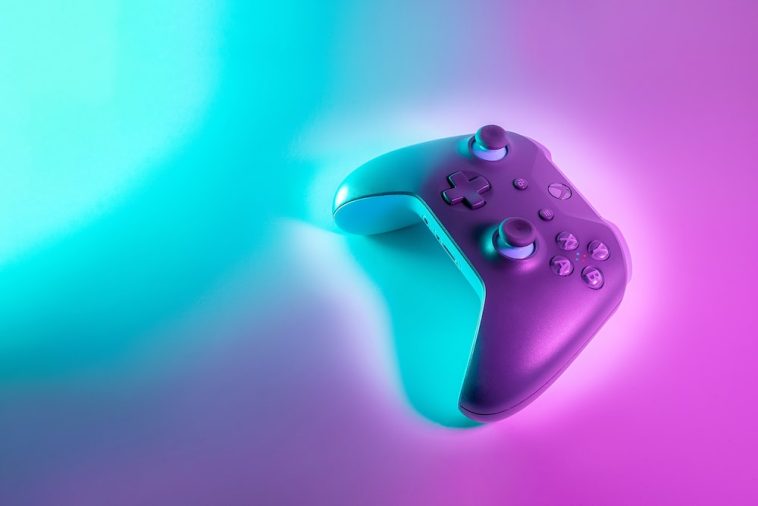Introduction.
Windows 10 has established itself as a popular choice among gamers due to its versatility and robust features.
While this operating system provides a solid foundation for gaming, there are several tweaks and optimizations you can apply to unlock its full potential.
Whether you’re a casual gamer or a dedicated enthusiast, optimizing Windows 10 for gaming can enhance your gaming experience by boosting performance, reducing distractions, and minimizing interruptions.
In this guide, we’ll delve into the art of fine-tuning your Windows 10 environment to make it more gaming-friendly.
We’ll explore a range of tips and tricks that will help you squeeze every ounce of power and responsiveness from your system, allowing you to immerse yourself fully in the virtual worlds of your favourite games.
Let’s embark on this journey to optimize Windows 10 for a superior gaming experience.
What Is Gaming?
Gaming refers to the act of playing electronic games, which are digital forms of entertainment that involve interactive gameplay and often require the use of various devices such as computers, consoles, smartphones, or dedicated gaming platforms.
These games can encompass a wide range of genres, styles, and formats, from single-player experiences to multiplayer competitions and from casual mobile games to complex, immersive virtual worlds.
Gaming has evolved significantly over the years, from its early days of simple graphics and limited gameplay to the advanced, realistic visuals and intricate storytelling present in modern games.
Players engage with games for various reasons, including entertainment, social interaction, competition, skill development, relaxation, and even as a form of art appreciation.
The gaming industry is vast and diverse, encompassing various genres like action, adventure, role-playing, strategy, simulation, sports, and more.
With the advent of online connectivity, multiplayer gaming has become a major aspect of the gaming landscape, allowing players to connect with friends and compete or cooperate with players from around the world.
What are The Many Benefits of Gaming?
In recent years, the landscape of entertainment and leisure activities has been significantly transformed by the rise of gaming.
What was once perceived primarily as a form of entertainment for young people has evolved into a multi-billion-dollar industry that spans generations and cultures.
Beyond the immersive worlds, captivating stories, and stunning graphics, gaming offers a plethora of benefits that extend far beyond the realm of mere amusement. From cognitive enhancements to social connections, here are some of the notable advantages of gaming.
1. Cognitive Skills Enhancement.
Contrary to the traditional belief that gaming is detrimental to cognitive development, research has shown that certain types of games can enhance various cognitive skills.
Action games, for instance, can improve reaction times, spatial awareness, and hand-eye coordination.
Strategy games require players to think critically, plan, and make decisions with long-term consequences, which can boost problem-solving and strategic thinking abilities.
Puzzle games stimulate logical thinking and creativity, as players often need to find unconventional solutions to complex challenges.
2. Improved Learning Abilities.
Educational games have emerged as a powerful tool for learning. These games are designed to combine entertainment with educational content, making learning engaging and enjoyable.
Through gaming, individuals can explore historical events, understand scientific concepts, and even learn languages in an interactive and immersive manner.
This approach can be particularly effective for visual and kinesthetic learners who thrive in hands-on learning environments.
3. Social Interaction and Collaboration.
Gaming is no longer a solitary activity confined to a dark room. With the advent of online multiplayer games and social platforms, gaming has become a social experience that allows individuals to connect with friends and make new acquaintances from around the world.
Collaborative games encourage teamwork, communication, and coordination, skills that are transferable to various aspects of life, including work and relationships.
4. Stress Relief and Relaxation.
Engaging in gaming can provide an effective means of stress relief and relaxation. Immersing oneself in a captivating game world can offer a temporary escape from the pressures of daily life.
Casual games or those with soothing aesthetics can be particularly calming, helping players unwind and destress.
5. Goal Setting and Achievement.
Gaming often involves setting and achieving goals, which mirrors the process of goal-setting in real life.
Whether it’s completing a difficult level, achieving a high score, or successfully conquering an in-game challenge, the satisfaction of accomplishment can foster a sense of achievement and boost self-esteem.
This experience can translate into increased motivation and resilience when facing challenges in the real world.
6. Enhanced Creativity.
Many video games allow players to engage with expansive and imaginative worlds. This environment can stimulate creativity, as players have the opportunity to experiment with various strategies, designs, and approaches.
Some games even provide tools for players to create their own content, fostering a sense of agency and originality.
7. Technological Proficiency.
As technology continues to play an integral role in modern society, gaming can contribute to technological proficiency.
Gamers often develop familiarity with various hardware and software interfaces, honing skills that can be valuable in a rapidly evolving digital landscape.
8. Cultural Understanding.
Certain games incorporate cultural elements, historical settings, and diverse characters, providing players with opportunities to explore and appreciate different cultures. This exposure can lead to greater cultural understanding and empathy.
How Do I Optimize Windows 10 for Gaming?
Gaming on a Windows 10 PC is a fantastic experience, thanks to its flexibility and broad game library.
However, to truly harness the power of your hardware and ensure a smooth, immersive gaming experience, you need to optimize your operating system.
Fortunately, there are numerous tweaks and adjustments you can make to fine-tune your Windows 10 environment for gaming.
In this guide, we’ll explore the most effective ways to optimize your Windows 10 system and take your gaming performance to the next level.
1. Update Your Graphics Drivers.
One of the first steps in optimizing your system for gaming is ensuring that your graphics drivers are up-to-date.
Manufacturers like NVIDIA, AMD, and Intel release driver updates regularly, and these updates often include optimizations for new games and improvements in performance.
- For NVIDIA: Visit the NVIDIA website or use the GeForce Experience app to check for driver updates and install them.
- For AMD: Use the AMD Radeon Software or visit the AMD website to update your graphics drivers.
- For Intel: Visit the Intel website and use their Driver and Support Assistant to update your integrated graphics drivers.
2. Windows Update.
Keep your Windows 10 installation up to date. Windows updates often include important performance improvements, security patches, and bug fixes that can benefit your gaming experience. Ensure automatic updates are enabled to receive the latest improvements.
3. Optimize Power Settings.
Adjust your power plan for maximum gaming performance. Windows 10 typically provides a Balanced power plan by default, which may prioritize energy savings over gaming performance. To optimize for gaming, switch to the High-Performance power plan. To do this:
- Open the Control Panel.
- Navigate to “Power Options.”
- Select the High-Performance power plan.
4. Game Mode.
Windows 10 includes a built-in Game Mode designed to improve gaming performance. To enable Game Mode:
- Open the “Settings” menu.
- Click on “Gaming.”
- Select “Game Mode” from the sidebar and toggle it on.
Game Mode can allocate system resources more efficiently to your games, reducing background tasks and potential distractions.
5. Disable Unnecessary Startup Programs.
Unwanted startup programs can consume system resources and slow down your PC. To disable them:
- Press Ctrl + Shift + Esc to open Task Manager.
- Navigate to the “Startup” tab.
- Disable unnecessary startup programs.
6. Adjust In-Game Settings.
Most games allow you to customize graphics and performance settings. Lowering graphical settings like resolution, texture quality, and shadows can significantly improve your frame rates. Experiment with these settings to find the right balance between performance and visual quality.
7. Windows Defender and Antivirus.
Windows Defender is a reliable antivirus solution, but it can impact gaming performance.
While disabling it completely is not recommended, you can add exceptions for your games and exclude specific folders from real-time scanning to reduce its impact on gaming performance.
8. Background Applications.
Close unnecessary background applications and processes that consume system resources.
Task Manager (Ctrl + Shift + Esc) can help identify resource-heavy applications. Ending these processes can free up valuable system resources for your games.
9. Adjust Visual Effects.
Customize the appearance and performance of Windows by adjusting visual effects. To do this:
- Right-click on “This PC” or “My Computer.”
- Click on “Properties.”
- Select “Advanced system settings.”
- Under the “Advanced” tab, click on “Settings” under the “Performance” section.
- Choose “Adjust for best performance” or manually customize the effects you want to keep.
10. Overclocking.
If you’re comfortable with it, overclocking your CPU and GPU can provide a substantial performance boost.
Be cautious when overclocking, as it can generate additional heat and potentially damage your components if not done correctly. Use reliable overclocking tools and follow safe overclocking practices.
Conclusion.
By following these steps, you can transform your Windows 10 PC into a gaming powerhouse.
These optimizations will help you get the most out of your hardware, allowing you to enjoy a smoother and more immersive gaming experience without any unnecessary hiccups.
Whether you’re into competitive eSports or exploring vast open worlds, an optimized Windows 10 environment can make your gaming journey more enjoyable and engaging.





GIPHY App Key not set. Please check settings